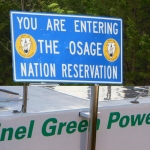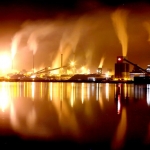UK: Anger at plan to dump tons of waste ash in lake
The German utility giant RWE, already under fire for the failure of its subsidiary company Thames Water to stem its unprecedented leak rate, is at the centre of another row over its environmental performance.
Its energy subsidiary, RWE npower, is seeking to dump half a million tons of power station ash in an Oxfordshire lake that is particularly rich in wildlife.
The lake, at Radley near Abingdon, is treasured not only for its peace and tranquility but also because of the extraordinary range of plant, insect, bird, mammal, reptile, and fish life that it shelters.
Its banks and its waters are host to a spectacular flora, including many wild orchids, nearly half of all the British dragonfly species, a rich community of butterflies and moths, bird life that includes four species of breeding warblers, plus kingfishers and great crested grebes, visiting otters and water voles, grass snakes, and a suite of fish species headed by giant carp.
Yet the lake, on the site of a former gravel pit, has slipped through the net of official environmental protection and has no nature conservation designation whatsoever. Its only defence is the concern of local people. RWE npower, however, have bought the lake and are seeking to use it as a dump for 500,000 tons of pulverised fuel ash from the giant coal-burning Didcot power station several miles away.
At a meeting today, councillors from Oxfordshire County Council will decide on whether or not to give planning permission to RWE to turn the lake into a landfill site, in spite of nearly 3,000 local protests.
The lake belongs to a series of disused gravel pits which have historically taken huge amounts of waste ash from Didcot since the giant, 2,000-megawatt coal-fired power station opened in 1970. The plant burns about 2.7 million tons of coal a year, which produces about 370,000 tons of ash.
Ten of these former water bodies have been filled in, with the ash piped directly to them. But the two that remain have matured into landscapes that are abundant in biodiversity. RWE npower were originally seeking to use both but after local people formed a pressure group, Save Radley Lakes, to preserve them, they dropped their application for one. The remaining 12.6 hectare lake, known to RWE as Lake E but to local people as Thrupp Lake, is a curious case.
It has never been noticed by the system, as it were, and has none of the official protective labels that have been put on most of Britain's best wildlife sites. Yet the claims by the Save Radley Lakes campaigners for its special quality were borne out on a visit by the Independent this week.
"For local people, this is our equivalent of a National Park," said campaigner Jo Cartmell. "It might be on a small scale, but it's just as special to us." The campaigners want RWE npower to find another site for the waste ash, or to recycle it.
Yet the company says it is already recycling half the ash into building materials and there is no market for the rest. It says there is no room left on the power station site to store the ash, and there are no other local sites.
"There aren't, unfortunately, any alternatives," an RWE npower spokesman said. "If we don't take this route for disposal of the ash, we would have to have heavy lorries going out of Didcot with it on a daily basis, and that would mean about 500 lorry journeys a week on congested roads."
The company says it will restore the lake site after the dumping is completed. "We do of course accept the lake won't be there following the works, and that there is strength of feeling about this," the spokesman said. "But there is a major national strategic need to be allowed to continue to use this route, which we've been doing for 20 years. The key thing is that we restore the site to a flourishing wildlife habitat afterwards."
- 107 Energy



